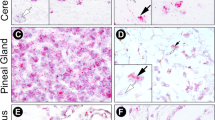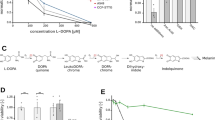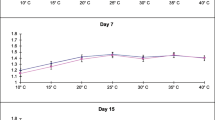Abstract
INVESTIGATIONS carried out chiefly with mammalian brain have revealed the presence of several enzymatic systems catalysing the oxidation of reduced nicotinamide nucleotides the properties of which are briefly outlined as follows: (1) a mitochondrial system which catalyses the oxidation of NADH but not NADPH by oxygen the activity of which is inhibited by antimycin A and amytal1 (NADH and NADPH stand respectively for the reduced forms of nicotinamide adenine dinucleotide and nicotinamide adenine dinucleotide phosphate); (2) two microsomal systems which catalyse respectively the oxidation of NADH and NADPH by cytochrome c and are not inhibited by these drugs1; (3) two NAD(P)H dehydrogenases capable of acting on both nicotinamide nucleotides when certain quinones are added and which are strongly inhibited by low concentrations of dicumarol2–4; (4) an NADH–ferricyanide reductase relatively insensitive to dicumarol5; (5) an NADPH–glutathione reductase6. The mitochondrial and the microsomal pathways are multi-component systems bound to these sub-cellular particles, while the remaining enzymes are soluble or readily solubilized proteins. With the exception of the mitochondrial NADH oxidase, which is known to be coupled to the process of oxidative phosphorylation, only scanty information is available on the part played by these oxidative systems. The complexity of mammalian brain presents additional difficulties in attempts to define the biological significance of these enzyme systems.
This is a preview of subscription content, access via your institution
Access options
Subscribe to this journal
Receive 51 print issues and online access
$199.00 per year
only $3.90 per issue
Buy this article
- Purchase on Springer Link
- Instant access to full article PDF
Prices may be subject to local taxes which are calculated during checkout
Similar content being viewed by others
References
Giuditta, A., and Strecker, H. J., J. Neurochem., 5, 50 (1959).
Levine, W., Giuditta, A., Englard, S., and Strecker, H. J., J. Neurochem., 6, 28 (1960).
Giuditta, A., and Strecker, H. J., Biochim. Biophys. Acta, 48, 10 (1961).
Harper, E., and Strecker, H. J., J. Neurochem., 9, 125 (1962).
Banay-Schwartz, M., and Strecker, H. J., Biochem. Biophys. Res. Comm., 8, 66 (1962).
McIlwain, H., and Tresize, M. A., Biochem. J., 65, 288 (1957).
Author information
Authors and Affiliations
Rights and permissions
About this article
Cite this article
ALOJ, E., GIUDITTA, A. Oxidation of Reduced Nicotinamide Nucleotides in the Central Nervous System of some Marine Invertebrates. Nature 202, 494–495 (1964). https://doi.org/10.1038/202494a0
Issue Date:
DOI: https://doi.org/10.1038/202494a0
Comments
By submitting a comment you agree to abide by our Terms and Community Guidelines. If you find something abusive or that does not comply with our terms or guidelines please flag it as inappropriate.



